Would you swap your Range Rover for a Yangwang? I put the luxury Chinese SUV to the test
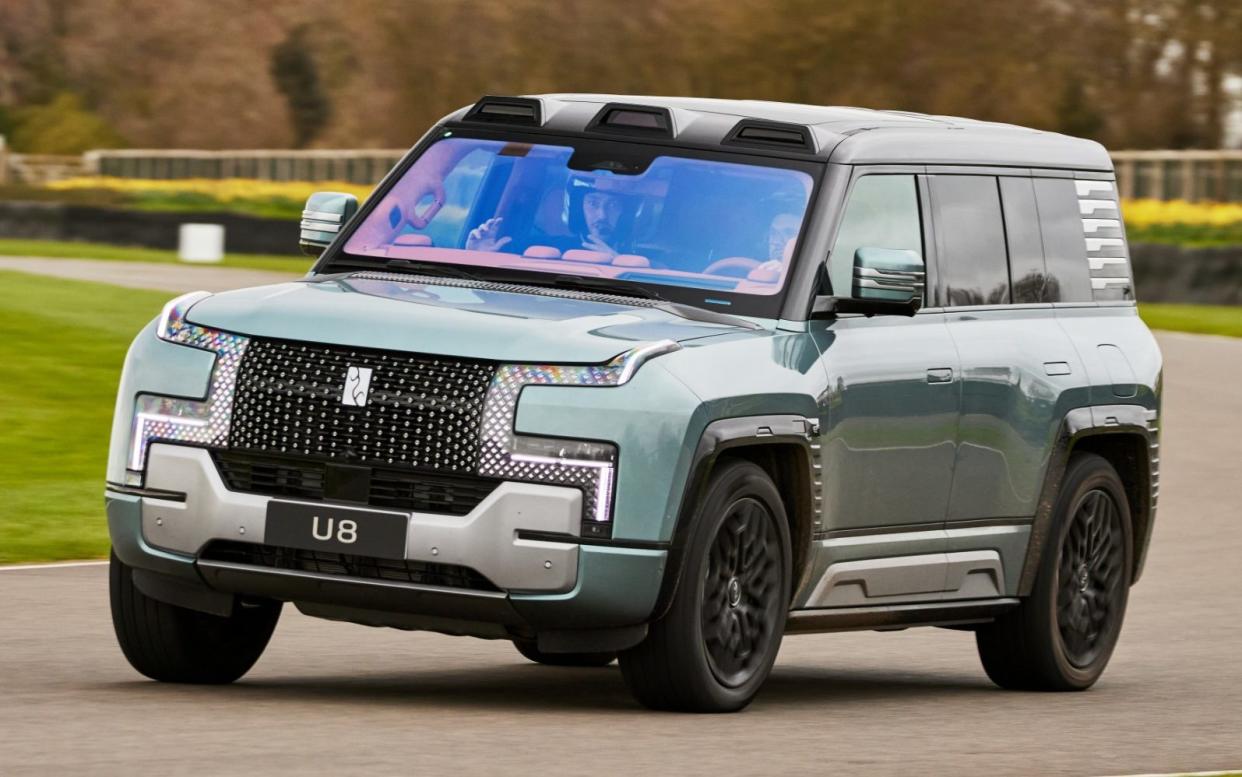
Tank turn? Search the term online and you’ll find endless videos of battery-powered Rivian monster pick-ups and Mercedes-Benz Concept EQGs spinning on their own axis like the stars of Dancing On Ice, emulating the way a tracked armoured vehicle rotates. This tyre- and bearing-torturing manoeuvre is the latest fad in massive electric SUVs; file it under SP for Spectacularly Irrelevant alongside lead sleds (cars with radically lowered roofs), overcomplicated touchscreens and, er, massive SUVs themselves.
But that memo didn’t appear to have reached the desk of Chinese manufacturer BYD’s luxury brand Yangwang when it debuted the U8, its second all-new model after the U9 supercar, at the Goodwood Motor Circuit.
All ready to spin like a top, this 3.5-tonne monster SUV had its European static debut at this year’s Geneva motor show. Nothing prepares you for the reality, though, as it pirouetted gently in the paddock while a dozen or so supercars in the pitlane were ignored. All the cameraphones were pointed at this huge, boxy SUV, which appears to share a lot of its proportions with Land Rover’s current Defender.
So what’s it like? I was at the wheel at the time, although had little to do while we spun around. The procedure is disarmingly simple. Activate the large central touchscreen, press VOT (Vehicle Origin Turn) and dial in the required degrees of turn, the speed and direction – it spins both clockwise and anti-clockwise. Then, press start, push the brake pedal, engage drive and let go of everything.
After a short pause, there’s a shudder from the front of the U8 and the scenery starts to move gently sideways across the windscreen. From outside you can see the big tyres squirming and the sound of abrading road surface, but apart from the gasps of onlookers, the battery-powered manoeuvre is largely silent.
And the point is?
So what is the point of this performing elephant, now on its inaugural world publicity tour? You might wryly comment that with its 2.0-metre width, 5.3-metre length and a conventional turning circle of 11.5 metres, a “tank turn” might be the only way you’re going to get this beasty parked in a tight space. But the U8’s job is already done, creating interest and YouTube videos to promote BYD’s one-year-old luxury car brand.
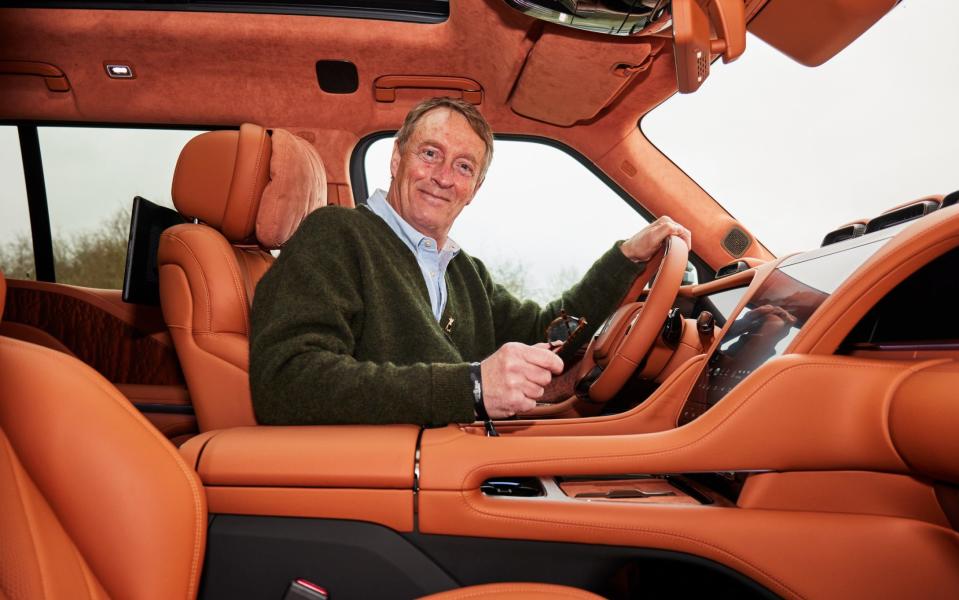
We’ll come back to this, but when you’re bored with spinning on the spot, this monster also floats and in an emergency it will bob around for half an hour as you helm it to safety with the wheels churning the water. Such antics are not just for fun, though, as its IP68 sealed electrics will require a full dealer inspection afterwards. For that reason, we didn’t drive to the nearby coast for an impromptu wild swim.
And with a total of 1,180bhp and 944lb ft of torque, it is also the world’s most powerful SUV, capable of 0-62mph acceleration in a scorching 3.6sec and a top speed of 124mph. In terms of gadgets and largely superfluous capability, the U8 seems as though it emerged from the workshops of James Bond’s Q.
Not a pure electric car
What it is not, however (despite strong implications out of the Geneva motor show) is a fully battery-electric vehicle (BEV). Programme chief Alisa Hong says BYD wants to do an all-electric version, but that’s a way off.
So the U8 is a plug-in hybrid, although strictly speaking, since the 268bhp four-cylinder petrol engine mounted across the front never actually drives the wheels, it’s a range extender (REX is the trade terminology).
Its massive power and torque come from a 49kWh lithium-iron phosphate battery (LFP) in the floor arrayed in BYD’s patented Blade structure. The petrol engine is there to charge the battery pack, which can also be recharged via the mains. Fill the batteries and the 75-litre petrol tank and you’ll be looking at a range of 620 miles, 112 miles of that in EV mode.
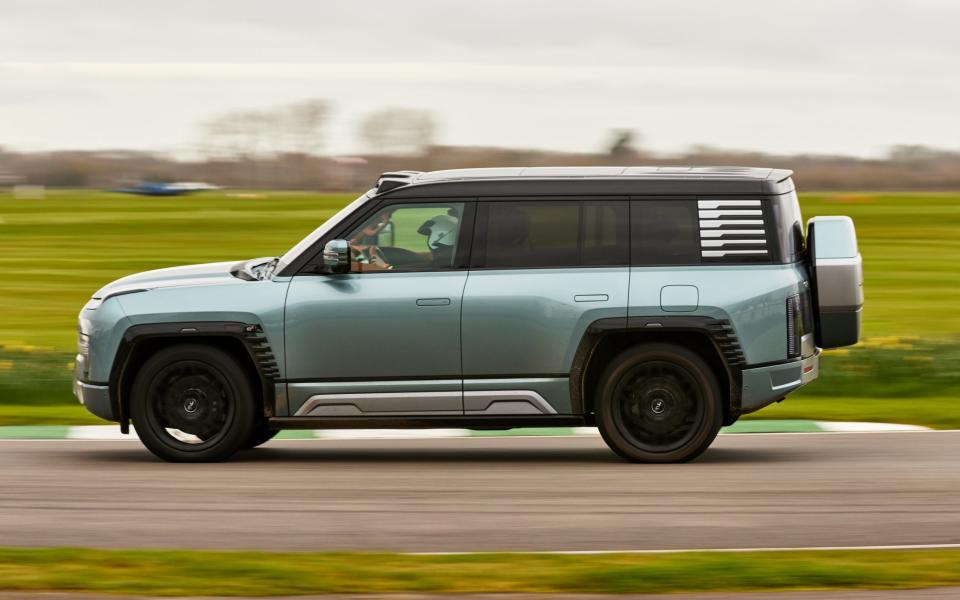
It has decent off-road geometry, too, with approach/departure/breakover angles of respectively 36.5/35.4/25.5 degrees, ground clearance of 285mm and wading capability of up to one metre, which is deeper than a Range Rover can manage.
There are three main driving modes, plus wading sensing and a hill-descent control with various drivetrain off-road modes, including yoking each of the front motors or rear motors together to provide the effect of locked differentials.
Rather than a modern car-like unitary bodyshell, it has a now-old-fashioned body-on-frame construction, using BYD’s e4Platform, a four-wheel-drive electric architecture, consisting of four 296bhp in-board motors either side of the inverter, which is attached rigidly to the chassis. The motors can be driven (or reversed) independently and drive the wheels via individual articulating driveshafts.
There’s also a full hydraulic intelligent suspension based on all-round upper and lower wishbones, which can raise the U8 by up to 150mm and will individually lift a punctured tyre so you can drive at modest speeds on three wheels – “pioneering” was used extensively in the product presentation and the idea seems to be that you drive out of the boondocks as well as in…
The luxury spin
The economics of creating a luxury spin off for a main-line car maker are simple. Using the same components and chassis technology with the addition of a swanky interior and swoopy bodywork, you can garner many times the profit margin and a bit of credibility for the pedestrian side of the company. Well, that’s the theory…
A lesson in how to do it is Toyota’s Lexus division founded in 1989 by Eiji Toyoda. It was born out of Toyota’s Flagship One (F1) project and starting with the LS400 premium saloon, it has painstakingly built a reputation for luxurious if somewhat bland cars, with exemplary customer service and dependability. The lesson of building reliable and attractive cars time after time also won Audi such respect in Europe.
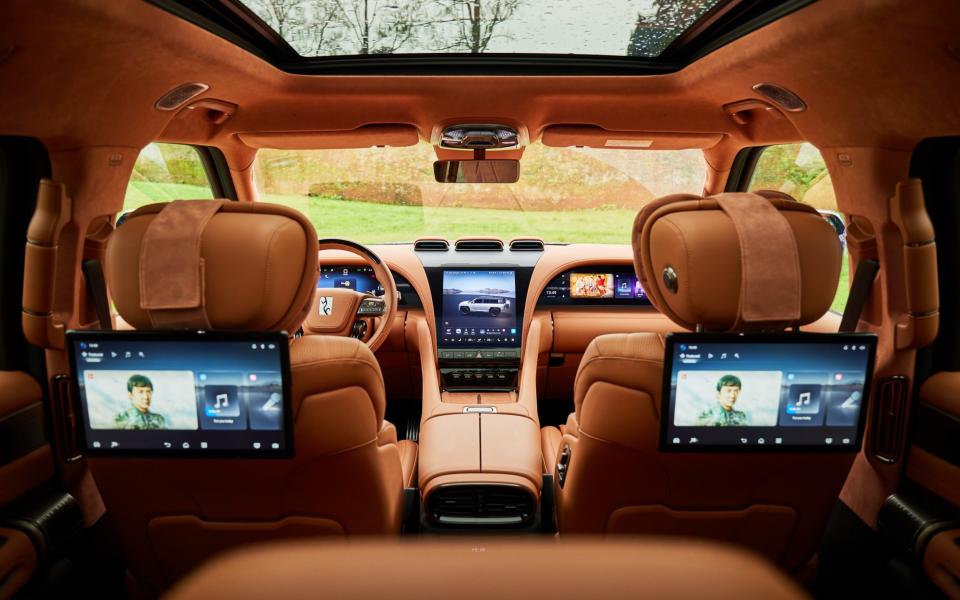
How not to do it? Count the ways. Nissan’s Infiniti brand is a good example. Launched only months after Lexus in 1989, it was designed to raise the profile and reach of the Nissan brand and maintain profits in an era of the US voluntary cap on Japanese imports by selling fewer but more profitable cars. Honda did much the same with its Acura spin-off.
Infiniti did modest business, though the saloons and SUVs were bland and the interiors lacked pizzazz. Then in 2010 came the absurd decision to launch in Europe. Flush with the ambition and success of the Nissan Renault Alliance, group boss Carlos Ghosn saw an opportunity to move Infiniti away from Nissan and create a Japanese BMW.
Business disaster
The move was a business degree case study of a disaster. In the peak year of 2016, total European sales were a barely detectable 13,775. Set-up costs were huge, and in 2019 Infiniti was quietly withdrawn from western Europe.
Similar lead-balloon attempts to create luxury out of nothing include Mercedes-Benz’s attempt to rehabilitate its Maybach marque in retaliation for not getting either Rolls-Royce (which was sold to BMW), or Bentley (which went to Volkswagen). Wilhelm Maybach was chief engineer of Daimler, but in 1909 created his own briefly impressive eponymous luxury car and engine manufacturer. Daimler bought it in 1960 and reformed on the back of an undoubtedly luxurious, but hideous, limousine in 2002. Sales were microscopic and in 2013 Maybach was closed as a car maker and subsumed back into Mercedes-Benz as a hyper-luxury trim line.
You could say the same about Ford’s Premier Automotive Group formed in 1999 by combining the Lincoln, Mercury, Aston Martin, Jaguar, Volvo and Land Rover marques, an adventurous buying spree which cost Ford around $17 billion and was gradually disbanded piecemeal until it ceased to be in 2011.
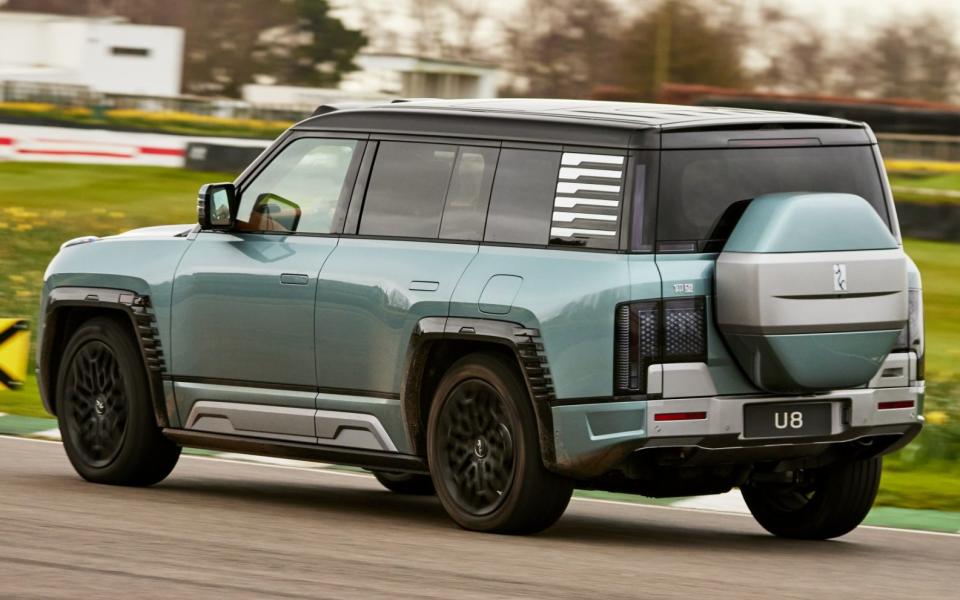
Hyundai/Kia of South Korea has recently stormed the luxury-brand hill with Genesis, although sales are reported to be slow, while upmarket Chinese brand Nio is dithering about entering the UK market.
Any other tricks?
Perhaps Yangwang, which means something like “look up at the stars”, is BYD’s attempt to get its shots in early, although it seems more likely that this introduction is a way of proving the marque’s credentials to its Chinese customers. In other words, launching in Europe is just a marketing ploy to demonstrate that Yangwang is a genuine contender…
Despite its size and length, the U8 is only a five-seater, with a boot capacity of 1,031 litres with the rear seats up and 2,050 litres with them folded. I’ll tow up to 2.5 tonnes, though there might be an issue with that 3.46 tonne kerb weight, which means it has a payload of only 40kg before those who passed their driving test after 1997 will require an upgrade to their driving licences, and speed limits will be reduced on A-roads and dual carriageways.
There’s also a vehicle-to-load facility of up to 6kW which uses the car’s battery to light up your tent like the Post Office Tower.
Climb inside
The appearance is blingy with hundreds of diamond-like LEDs on the front and wind strakes on the lights, doors and rear wings. It’s so ginormous that the 22-inch wheels look lost in the square-topped wheel arches (20-inch wheels are an option).
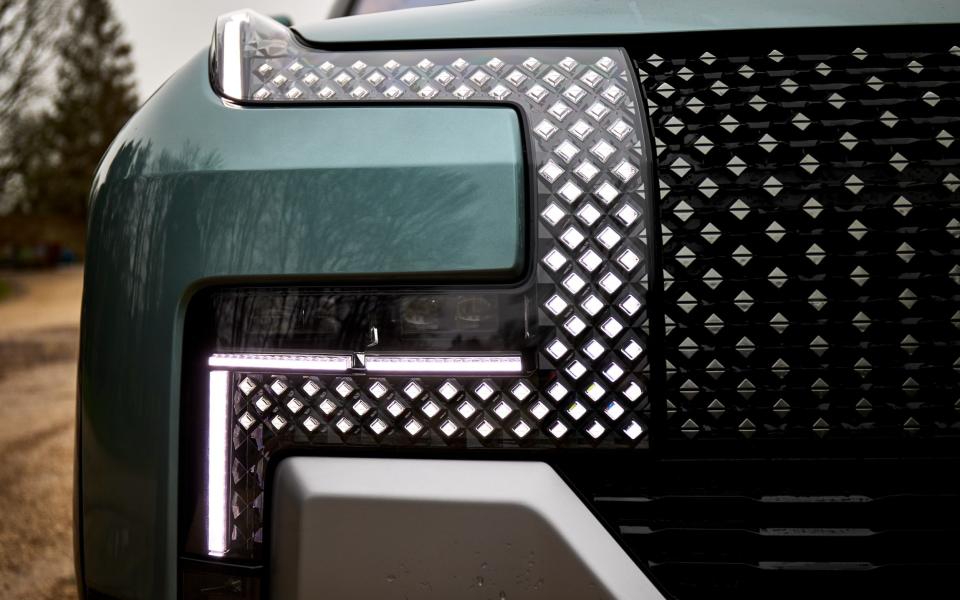
For all its flashy appearance, however, it seems well made, with tight shut lines and a fine paint finish.
The interior is an explosion of tanned leather, similar to, if not as soft and well finished, as Bentley’s Bentayga. All the seats are wide and deep, with plush springing and good side bolsters. There’s a heavily cowled centre console so front-seat passengers are kept well apart and five screens (two in the back) with a gently curved central screen. The front passenger screen appeared to be showing a Bruce Lee film. As befits the modern idea of luxury, the tailgate and door handles are motor assisted.
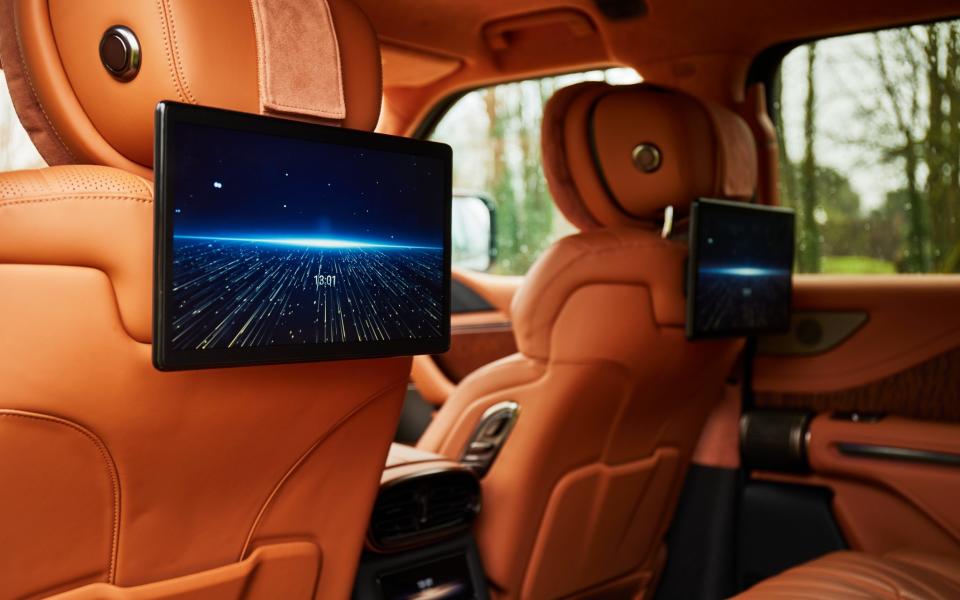
On the Goodwood circuit it felt heavy, lumbering but very fast. With the traction and stability controls bleeping all the way around the fast corners at Fordwater and St Mary’s, I could feel the nose sliding wide of the apex. On the tighter corners of Lavant and the chicane, the U8 required gentle encouragement into the turn, but the traction on the exit was impressive. Lift off the power and the reactions were muted, with no evidence of nasty vices on the slimy circuit.
It felt hilarious chasing supercars along the straight then rolling like a ship in a storm through the corners. And on the pitted car park, the ride wasn’t a disaster, either, though there was a slight clunkiness from the drivetrain coming on and off the accelerator and the steering, while well weighted, is devoid of feel.
The Telegraph verdict
While the U8 isn’t even homologated for European use, it is on sale in China at a price of 1,098,000 yuan, which equates to about £120,000. More than 4,000 have been sold in China so far although there are questions (not least that weight and size) about whether it will ever make an appearance in the UK – queue a sigh of relief from those who live down narrow country lanes.
And proving there’s nothing new under the sun, it’s worth pointing out that Volkswagen’s Beetle could also float and “drive” across lakes, and Citroën’s DS with its hydropneumatic suspension could drive itself on three wheels in an emergency.
All in all, the U8 behaves and feels pretty much as you’d expect a car like this to. A Land Rover Defender is a far superior product on the road and most likely off it, but then, it can’t tank turn, can it?
The facts
On test: BYD Yangwang U8
Body style: large five-seat SUV
How much? from £120,000 (in China)
How fast? 124mph, 0-62mph in 3.6sec
How economical? 25mpg (estimate)
Engine: 2.0-litre 268bhp, four-cylinder petrol acting as a range extender, four-wheel drive
Electric powertrain: 49kWh LFP battery in blade structure, driving four individual 296bhp wheel motors mounted in-board
Electric-only range: 112 miles (total range 620 miles)
Maximum power/torque: 1,180bhp/944lb ft
CO2 emissions: n/a
VED: n/a
The rivals
Kia EV9, from £76,995
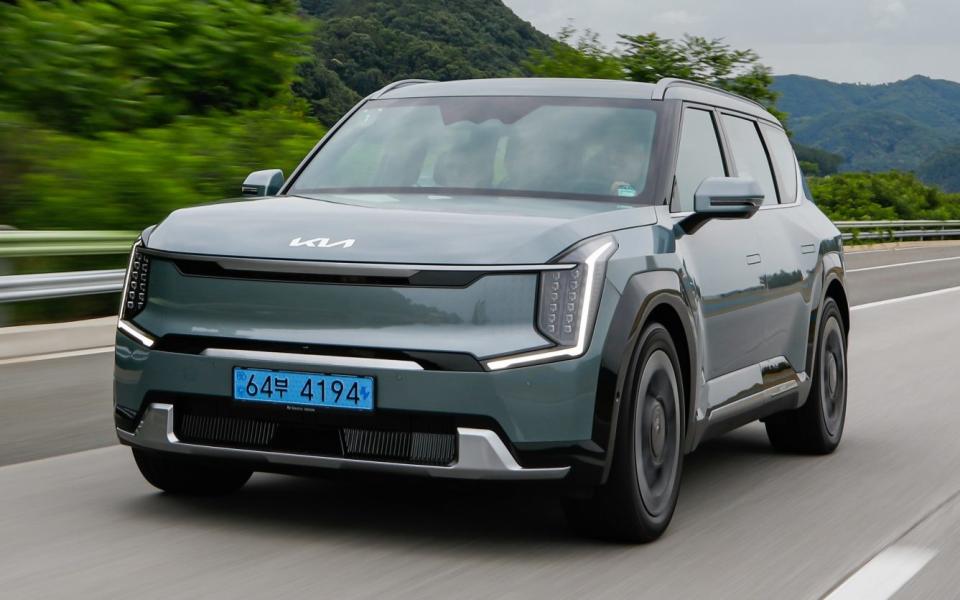
Seven-seat SUV with two- or four-wheel drive and out-there styling. The 4x4 has a 313-mile range and goes as fast as the U8, but its 100kWh lithium-ion battery doesn’t provide the same acceleration and it only has two motors. Despite its size and bulk, the EV9 is surprisingly likeable to drive, although the two-wheel drive version is cheaper and goes further on a full charge.
Range Rover SE P460e PHEV, from £115,585

We’re on the cusp of the launch of the all-new battery electric Range Rover, but for the moment, this is as environmental as Land Rover’s top model gets. The plug-in hybrid drivetrain musters 460bhp and will propel the P460e from 0-62mph in 5.5sec. The CO2 figure is 16g/km. A bit of a cliché, but a wonderful thing to drive.

